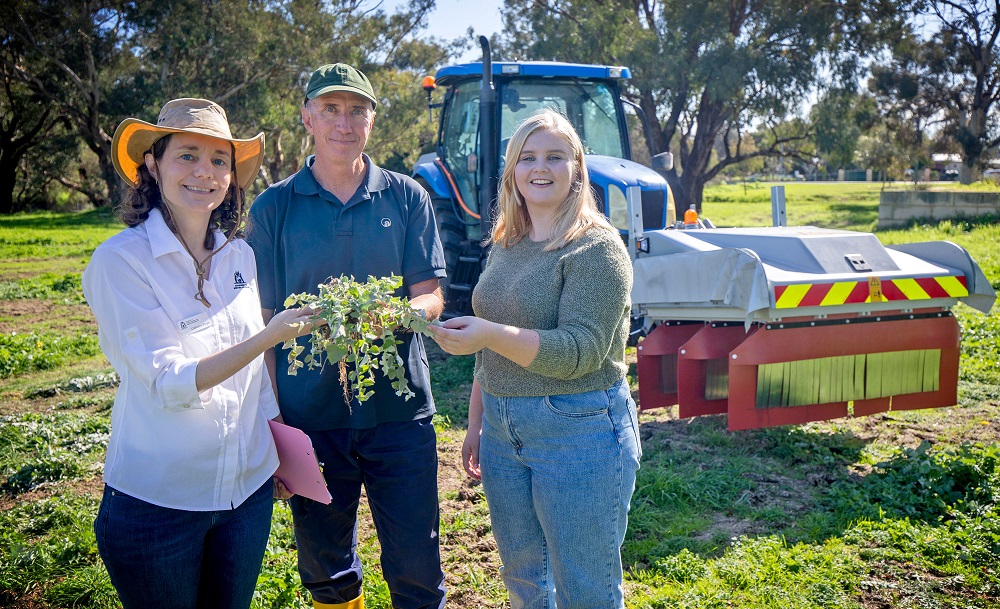
The project, now in its second year, aims to assist farmers and community land managers develop sustainable, non-chemical weed control solutions.
The Department of Primary Industries and Regional Development (DPIRD) is leading the project in association with AGXTEND, a brand of CNH Industrial, testing the XPower machine, powered by Zasso™, under Australian conditions.
The project also has investment from the Grains Research and Development Corporation, Wine Australia and the Cotton Research and Development Corporation with in-kind support from AHA Viticulture and the Western Australian Local Government Association (WALGA).
DPIRD research scientist Miranda Slaven said the technology was already used in Europe, with the project team seeking to prove its use for the Australian environment.
“Last year’s trials have shown that electric weed control is effective when used at the right application speeds and under the right environmental conditions,” Ms Slaven said.
“In the 2022 trials, effective control was achieved for annual ryegrass, kikuyu, wild radish, capeweed, soursob and medic at application speeds of one to four kilometres per hour.
“The trials found that broadleaf weeds are easier to control than grass weeds due to differences in plant structure.
“Application speeds, or the ‘dose’ of electricity, need to be adjusted accordingly, as would occur with herbicide application rates.”
Research conducted this year has included an analysis of the effectiveness of electric weed control on herbicide resistant weed populations, with a trial on glyphosate resistant annual ryegrass.
“Operating the electric weed control at a speed of two kilometres per hour proved highly effective in reducing weed biomass by more than nine times compared with using glyphosate (RoundUp Ultra Max at 1.5 litres per hectare),” Ms Slaven said.
“This finding shows that growers facing herbicide-resistant weeds could use electric weed control as an alternative option to chemicals.
“For instance, this technology can be employed along fences or roadsides and for maintaining fire breaks.
“It could also be integrated into current management strategies to assist in preventing herbicide resistance development.”
Trials in vineyards in WA’s South West have found that electric weed control obtained comparable results to the application of herbicides at budburst and performed better than mowing.
“This technology also has potential to be used by organic growers,” Ms Slaven said, with a recent field day in the area attended by interested viticulturalists and vegetable growers.
“Analysis of the soil bacteria populations showed no difference after electric weed control at two and five weeks after the treatment.”
The project is due to finish in mid-2024.


